Chinese Name: 爨底下村 Pronunciation: Cuàndǐxià Cūn
Opening Hours: All day
Best Visiting Season: All seasons
Recommended Time for Visit: One day
Occupied Area: About 5.33 square kilometers
Building Time: The Ming Dynasty (1368-1644)
Address: Zhaitang Town, Mentougou District, Beijing
Popular Activities: Villagers hold folk activities to celebrate the Lantern Festival.
Building Function: The Cuandixia Village serves as a place to display the rural culture.
Admission Ticket Fare: 35 Yuan (Ticket Free of Charge Policy: Children under 1.2 meters are free of charge.)
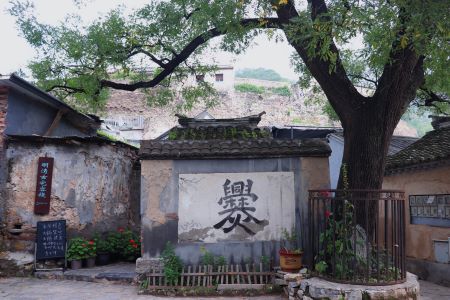
The Cuandixia Village, a traditional Chinese village, is 90 kilometers away from Beijing and covers an area of 5.33 square kilometers with an altitude of 650 meters. The climate of the Cuandixia Village belongs to a temperate monsoon climate characterized by low and variable temperature, with an average annual temperature of 10.1 degrees. According to the official website of the Traditional Chinese Village Digital Museum in February 2020, the villagers of the Cuandixia Village are mainly the Han nationality, with a registered population of 102 people and a permanent population of 98 people.
The Cuandixia Village is built based on its special geographical location. With Longtou Mountain of the village as the center and the north and south as the axis, the whole village is fan-shaped on both sides. There are now 74 sets of houses and 689 rooms from the Qing Dynasty (1644-1912). The upper and lower parts of the village are separated by one arc-shaped wall, 200 meters long and 20 meters high. In front of the village, there is a 170-meter-long bow-shaped wall, which keeps the whole village more concentrated. Three passageways are running through the upper and lower parts, and there are building patterns with more functions of flood control and banditry prevention. These ancient residential buildings are valuable historical relics that play an important role in the study of Chinese residential architecture.
The Cuandixia Village follows the traditional view that “man is an integral part of nature,” and the designers applied the ancient “Feng-shui theory” (a kind of ancient Chinese architectural theory) to the distribution and arrangement of land use, paying attention to “respecting for nature”, “adapting to nature”, and “adjusting measures to local conditions”. That means the architectural concept gives full play to the conditions of natural geographical potential and ecological environment and combines them with the villagers’ production and living needs.
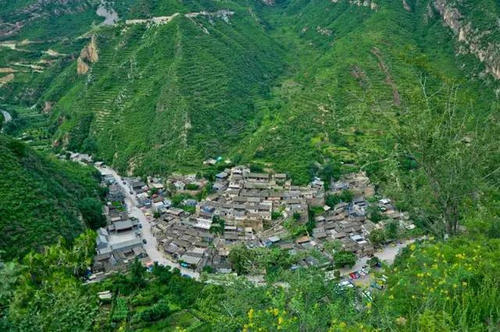
There are two main roads parallel to the contour line on the upper and lower parts of the village. The two main roads, together with many mountain roads and alleyways between the courtyards, extend in all directions. According to the different topography, the orientations of the houses and courtyards are different, forming a three-dimensional layout on the mountain land. This is the best way to maximize the use of three-dimensional space on a limited site.
Under the control of the north-south axis centered on Longtou Mountain, more than 70 exquisite courtyard houses in the Cuandixia Village are divided into upper and lower levels according to the changes in mountain height. Courtyards are arranged flexibly on the limited base in a radial pattern. The overall layout of the village from a bird’s-eye view is shaped like a “gourd” or a “gold ingot”, and the builders intended to transfer ideas of “good fortune” and “great wealth” for the village. It is an auspicious symbol for the ancient village environment.
The flexible village layout of the Cuandixia Village skillfully uses the three-dimensional layout on the mountain land. This is a successful example of how the Cuandixia Village cherishes the land, conserves land, and makes full use of limited mountainous land to build a residential environment, in order to obtain more land for agricultural cultivation and agricultural development. It is also a manifestation of the ancient Chinese village’s value of treating land as life and striving for reasonable land use for sustainable development.
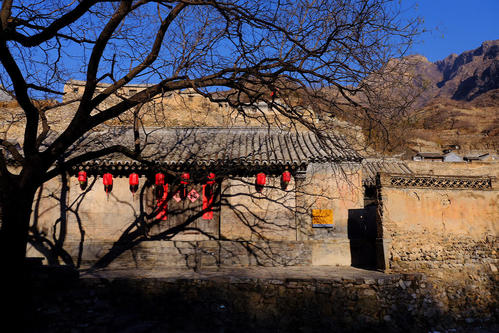
As of 2011, the Cuandixia Village received more than 100,000 domestic and foreign tourists every year, with tourism revenue accounting for more than 95% of the village’s total revenue and the per capita net income approaching 10,000 yuan. According to the website of the Traditional Chinese Village Digital Museum in February 2020, the annual collective income of the Cuandixia Village is 1 million yuan, and the annual per capita income of the villagers is 15,000 yuan.
On December 17, 2012, the Cuandixia Village was announced as the first batch of Chinese traditional villages by the Ministry of Housing and Urban-Rural Development, the Ministry of Culture, and the Ministry of Finance. What is more, on August 26, 2020, it was selected as the second batch of National Key Village for Rural Tourism.

The Cuandixia Village was built in the Ming Dynasty. During Emperor Yongle’s reign (1403-1424) of the Ming Dynasty, the ancestors of the village migrated from Shanxi to Beijing, and the current location of the Cuandixia Village was established as a place for Han’s family to gather.
In the tenth year (1515) of Emperor Zhengde’s reign of the Ming Dynasty, Han Fujin, Han Fuyin, and Han Fucang, the first-generation ancestors of the Cuandixia Village, were ordered to guard the border from place of Yanhecheng to the place of Cuanlikou. Gradually, this place developed into the Cuandixia Village where the Han family lived together.
In the 14th year (1519) of Emperor Zhengde’s reign of the Ming Dynasty, the ancient post road was built. Since then, the post road gradually developed into an important stop for passing merchants and formed village settlements.
In the sixth year (1876) of Emperor Tongzhi’s reign of the Qing Dynasty, the Cuandixia Village was under the governance of the Qijia Department in Wanping County, and the soldiers were transferred to civilians.
During the War of Resistance Against Japanese Aggression (1931 to 1945), the anti-Japanese democratic government of Wanping County moved to the Cuandixia Village.
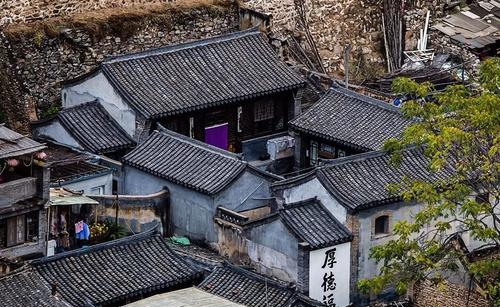
There are similarities and differences between the quadrangle dwellings in the Cuandixia Village and Beijing. The sizes of the main and wing rooms, the gatehouse, and the location of the central axis are all governed by geomancy. Both Beijing’s quadrangle dwellings (sihe yuan) and the Cuandixia Village’s quadrangle dwellings enjoy the identical architectural philosophy, but they differ in the details of the decoration, particularly the stone carving.
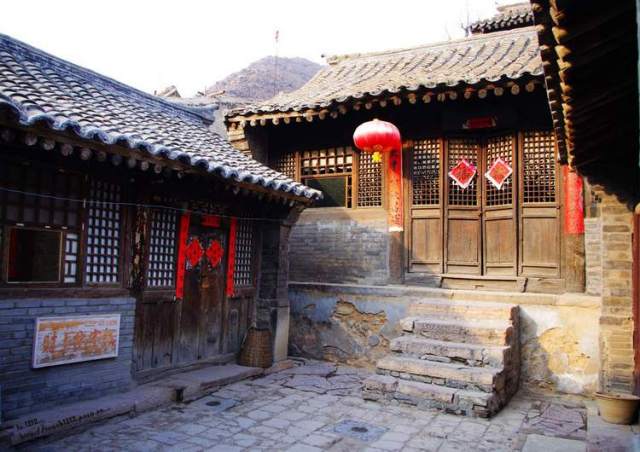
The Caizhu(‘Caizhu’ refers to the rich person in the old days.) Courtyard, also known as the Guangliang Courtyard, is located at the highest position on the central north-south axis of the village. The courtyard is divided into the front yard and back yard, with eastern, middle, and western yards in the front yard, forming a large quadrangle courtyard with 45 rooms in total. The gatehouse of the Caizhu Courtyard is located in the southeast corner of each yard with exquisite decoration, which is called “Guangliang Gate”.
The rift valley is more than 100 meters long, which is a typical fault landscape and can be rated as a natural barrier. The spectacle is so unique that it is commonly known as “Thin Strip of Sky”.

“Han” is the main surname in the village, and basically every villager is surnamed Han. There are two stories about the origin of this ancient village. One is that it is said that during Emperor Yongle’s reign of the Ming Dynasty, a group of people moved here during the great migration from Shanxi to Beijing. However, a flash flood washed away the original village, and only one man and one woman survived. Since the man’s surname was Han, and the villagers were mostly his descendants, they were all surnamed Han.
The second story is that during the Ming dynasty, the imperial court forced many laborers to build the Great Wall, the Han families escaped from the hard labor and settled down here, giving rise to this village.
Take bus M12 and get off at Cuandixia Village Station. After getting off the bus, you need to walk about 6 minutes and then you can get to the village.
Chinese: 请带我去爨底下村。 English: Please take me to the Cuandixia Village.
If you go to the Cuandixia Village from the center of Beijing (Grand Hyatt Beijing), it takes about 2.3 hours (about 320 yuan).
If you go to the Cuandixia Village from Beijing Capital International Airport, it takes about 2.4 hours (about 430 yuan).
If you go to the Cuandixia Village from Beijing Daxing International Airport, it takes about 2.5 hours (about 480 yuan).
If you go to the Cuandixia Village from Beijing West Railway Station, it takes about 2 hours (about 300 yuan).
